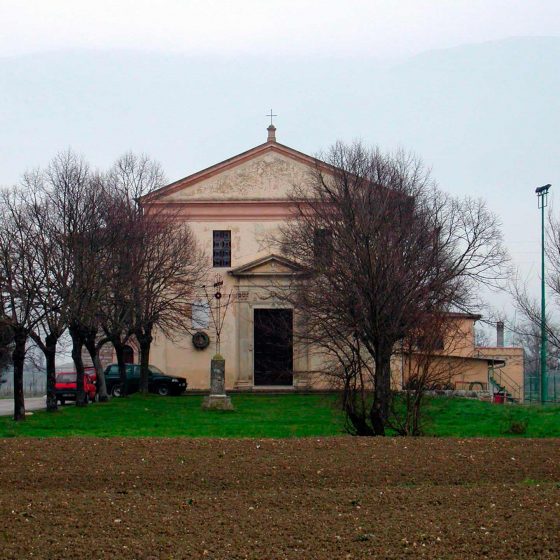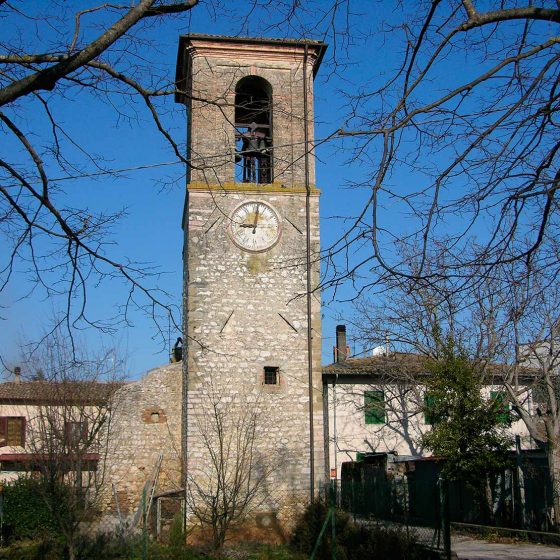La chiesa è un edificio costruito nel 1641 dalla Compagnia del Santissimo Sacramento, all’esterno della cinta muraria medioevale; inizialmente era dedicata a Santa Maria.
Nel 1727 fu arricchito delle reliquie del Santo titolare.
La facciata, ispirata all’arte greca, ha un portale in marmo bianco, formato da due lesene sovrastate da un elegante timpano.
La navata della chiesa ha volta policroma a botte, con otto cappellette laterali alle quali si può accedere tramite arcate a tutto sesto.
Di queste, quattro presentano altari barocchi sovrastati da pale del diciassettesimo secolo (la prima, a sinistra, in particolare, è datata 1666); nella quinta, in alto è posta una statua del santo titolare, le altre hanno perso la loro funzione originaria, divenendo semplici vani di accesso.
L’abside è ricca di fregi ed ornamenti in stile tardo-barocco, con predominanza dei colori verde-azzurro.
Sul cornicione che delimita il muro absidale si collocano due statue, rispettivamente di san Giuseppe da Leonessa e sant’Agata, convergenti verso un medaglione raffigurante Dio benedicente.
Questa chiesa fu fatta costruire in sostituzione di un antico edificio in stile romanico ricco di affreschi del pittore spoletino Jacopo Zampolini (1488), distrutto dal sisma del 1604.
Della chiesa originaria resta la sola torre campanaria.
Sul sagrato della chiesa, in un muretto di recente fattura, sono inglobate quattro vecchie pietre calcaree, chiaramente di origine romana, che fino a pochi anni or sono erano semplicemente appoggiate sul cortile (di fronte all’edificio religioso).
TREVI, SAN LORENZO, CHURCH OF SAN LORENZO `{`SAINT LAWRENCE`}`
The church is a building constructed in 1641 by the ‘Compagnia del Santissimo Sacramento’ (Company of the Blessed Sacrament) outside the medieval walls; it was initially dedicated to Santa Maria (Holy Mary). In 1727 it was enriched with the relics of the titular saint.
The facade, inspired by Greek art, has a white marble portal, formed by two pilasters surmounted by an elegant tympanum.
The nave of the church has a polychrome barrel vault, with eight small side chapels accessed through round arches.
Of these, four have Baroque altars surmounted by 17th-century altarpieces (the first, on the left, in particular, is dated 1666).
In the fifth, above, there is a statue of the titular saint; the others have lost their original function, becoming simple access compartments.
The apse is rich in fret decorations in late Baroque style, with a predominance of green and blue colours.
On the cornice bordering the apse wall are two statues of St. Joseph of Leonessa and St. Agatha respectively, converging towards a medallion depicting God in blessing.
This church was built to replace an ancient romanesque building, with frescoes by the Spoleto painter Jacopo Zampolini (1488), destroyed in the 1604 earthquake.
Only the bell tower remains of the original church.
In the churchyard, four old limestone stones are embedded in a recently made wall; they are clearly referable to an ancient building of Roman origin. Until a few years ago they were simply resting on the courtyard (opposite the religious building).
The translation of this post is edited by Patrizia ANTONELLI














